All about Alternaria
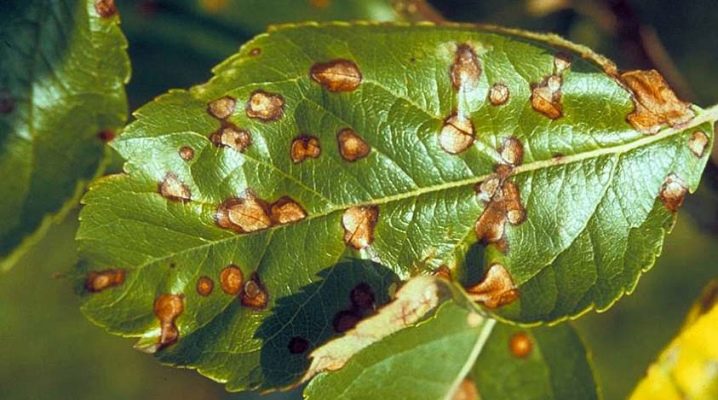
Alternaria is a fairly common disease that affects many crops growing in a greenhouse, garden or vegetable garden. Therefore, most gardeners and gardeners need to learn how to deal with this disease.
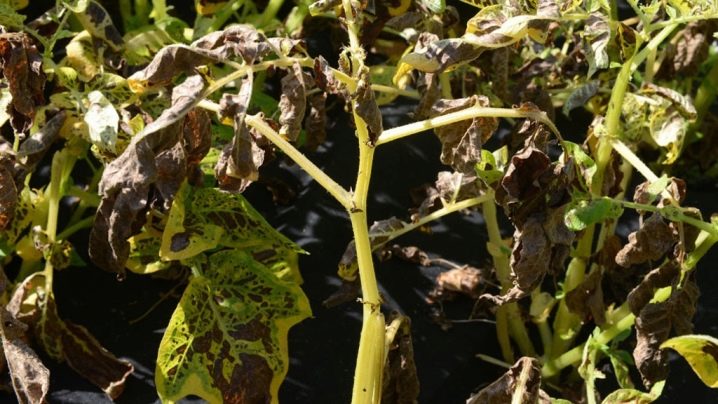
general description
Another name for Alternaria is "black spot". This disease spreads quickly enough. The cultures of the southern regions suffer most from it.
Alternaria can be recognized by brown spots. They appear on different parts of the plant. This can happen throughout the summer. These spots usually show dead tissue. In the future, dark areas are covered with a dense bloom. After 1-2 days, fungal spores appear on them.
The danger is that these spores can spread through the air. This leads to infection of the rest of the plants. Spores can be carried both by the wind and by various insects.
In addition, they remain in the ground and plant debris for a long time.
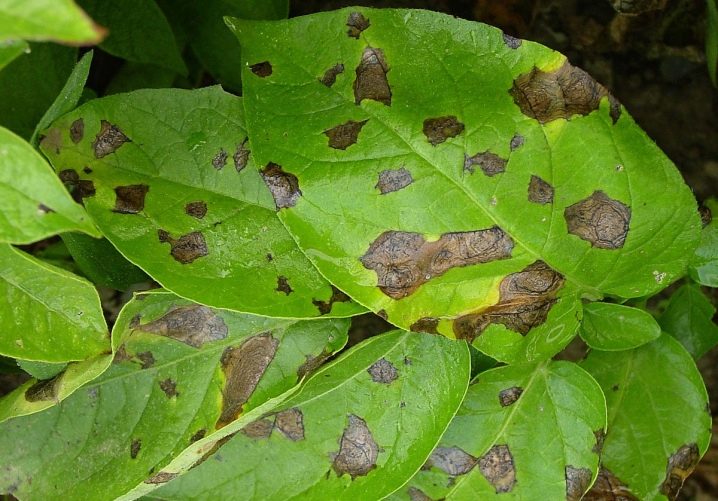
Which cultures are affected?
Alternaria affects most of the crops growing in the garden and in the garden. The following plants are most often affected.
- Tomatoes. The disease that affects tomatoes is called dry spot. As a rule, young tomatoes are ill. Dry gray-brown spots appear on the foliage. In the future, they only increase. This leads to the fact that the plant weakens, and then dies altogether. When the disease affects mature plants, dark spots appear not only on the foliage, but also on the fruit. They change shape and become unusable.
- Potato. This culture is affected by Alternaria in mid-June. Most often, middle-late varieties are sick. Tubers of infected plants develop slowly. In addition, they become covered with dark spots.
- Wheat. Black spot attacks wheat during flowering. During this period, the grains may become covered with black spots. If wheat is left untreated, the flour from the harvested grains will be dark and unsuitable for baking. Rice and barley get sick in the same way.
- Grape. Symptoms of the disease can be noticed as early as May. At this time, the leaves and shoots are covered with silvery spots. Berries on such bushes either do not appear at all, or appear in small quantities.
- Sunflower. The disease is most dangerous at the stage of seed formation. At this time, a brown spot may appear on the back of the basket. Over time, it will begin to expand, which will damage the entire plant.
- Onion. Onions affected by Alternaria can be spotted by watery white spots on their feathers. Onion greens die off very quickly. The heads underground are also susceptible to this disease. Infected bulbs are no longer edible.
- Zucchini. On zucchini, the disease manifests itself in the form of small spots. They can be either white or brown. Over time, individual points are connected, and areas of the zucchini are covered with a velvety bloom of black. Diseased plants develop poorly and die quickly.
- Apple trees and pears. The disease affects fruits and foliage. This is easy to notice. Dark heels with purple edges appear on their surface. This usually happens a month after the end of flowering.
- Cabbage. Black spot affects both young plants and adults. Black stripes and spots appear on the seedlings. This leads to wilting and death of the greenery.In adult cabbage, the upper leaves of the heads of cabbage are covered with dark spots. Very often they have a yellow border. If the disease affects cauliflower, the inflorescences become covered with brown rot. This leads to the fact that the plants become unfit for food.
- Pepper. Identifying contaminated vegetables in an area is easy. Angular dark spots usually appear on foliage. Over time, they are transferred to the fruit. A few days after the appearance of spots, they may become covered with a black coating.
- Eggplant. These plants get sick if the summer is hot and rainy. Weeping spots appear on foliage, shoots and fruits. The foliage on the bushes begins to die off. The fruits rot at this time.
- Pumpkin. The first sign of damage to the bushes is the appearance of small spots on the surface of the fruit. They can be either brown or white. The scourges at this time become covered with orange mucus. In a short period, this disease can completely destroy the bushes growing on the site.
- Beans. Spores of dangerous fungi can invade both the stems and the foliage of the beans. Infected areas are covered with dark spots. Over time, a velvety coating appears on them.
- Carrot. These root crops suffer from Alternaria at an early age. Literally a few days after the sprouts appear on the site, the greens are covered with dark spots. Further, the tops begin to curl. Over time, the infected plants die. If the roots are infected in adulthood, the disease may go unnoticed. Indeed, in this case, the fruits that are underground are affected. Affected roots rot quickly.
- Cucumbers. The development of this disease in cucumber beds is facilitated by high humidity. Therefore, it is not recommended to over-water plants in greenhouses and garden beds.
- Flowers. People who are engaged in flower cultivation should also remember about this disease. Alternaria most often affects phlox, pelargonium, gerbera and orchid. Dark spots can appear both on shoots or foliage, and on the inflorescences themselves.

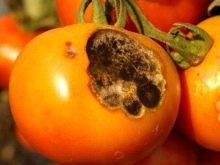
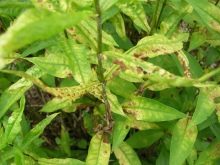
More rarely, this disease affects plants such as rapeseed, strawberries, strawberries, currants, sugar beets and peas. In addition, the disease often affects conifers such as juniper and thuja.
Treatment methods
There are several basic ways to deal with black spot.
Chemicals
Chemicals are considered the most effective and fast-acting. They help to quickly and easily get rid of the disease. The following drugs are popular among gardeners and gardeners.
- "Maksim". This product is used for processing fruits and vegetables as well as flowers. The effectiveness remains for another month and a half after treatment.
- "Quadris". One of the fastest acting fungicides. The effect of the treatment of the site can be seen within an hour after the procedure.
- Ridomil Gold. This chemical is used to treat potatoes, grapes and vegetables. It is this remedy that is considered the most effective in the fight against black spot.
Biologicals can also be used instead of chemicals. It is worth paying attention to such products as "Agat-25", "Planriz" and "Baktofit".
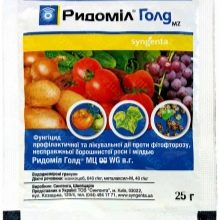
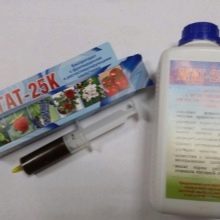

Protective clothing must be worn when handling chemicals. There should be no animals or children around at this time. It is necessary to process the site with the selected agent, following the instructions on the package. It is not worth using biological and chemical preparations together.
Folk remedies
Instead of "chemistry" on your site, you can use folk remedies.
- Kefir. This product is diluted with water in a ratio of 1 to 10. The solution is used to spray the area. You can also use whey instead of kefir.
- Soda. Ordinary soda can also be used to protect plants from most fungal diseases. To do this, 30 grams of the product must be mixed with the same amount of soap. The mixture must be diluted in a container with 10 liters of water.The solution is used for spraying leaves and shoots.
- Wood ash. Ashes for the treatment of the site are also diluted in 10 liters of water. Infuse the product for a week. The use of this product helps not only fight disease, but also strengthen the plant.
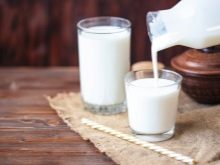
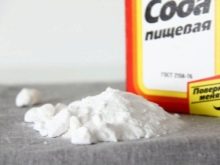

If it was not possible to cope with the disease in any way, the gardener needs to remove infected plants or parts of them from the site.
Prevention measures
To spend less time fighting this disease, it is worth adhering to certain preventive measures.
- Observe the crop rotation. Before planting any plants on your site, you need to make sure that they will have enough nutrients.
- Use disease-resistant planting material. There are now many varieties of plants on the market that are resistant to fungal diseases. It is recommended to give your preference to them. Especially if in the past the plants on the site have already suffered from Alternaria.
- Fight weeds in the garden beds. It is also important to loosen the soil in the process. If this is not possible, the beds can be mulched. It will also help save watering time.
- Maintain the site in order. In thickened plantings, the disease spreads faster. Therefore, the site must be kept clean. Trees and bushes need to be pruned regularly, climbing plants need to be tied up. It is very important to disinfect the tools used for work.
- Feed the plants regularly. This helps to make crops more resistant to various diseases. You need to use feeding very carefully. If the nitrogen concentration in the soil is exceeded, the plants will get sick even more often.
- Get rid of plant residues in the fall. It is especially important to do this if the plants on the site were sick before. Plant residues must not only be collected, but also burned or taken out of the site. You cannot use them as top dressing.
- Treat the area with fungicides. In order to prevent infection of plants with Alternaria, many gardeners prefer to treat the site with fungicides. This can be done both in spring and autumn. The same preparations are used to treat young plants.
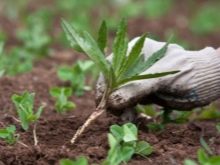

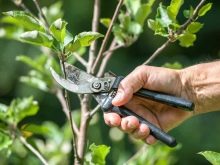
If done correctly, the gardener will be able to protect the plants of this dangerous disease.













The comment was sent successfully.